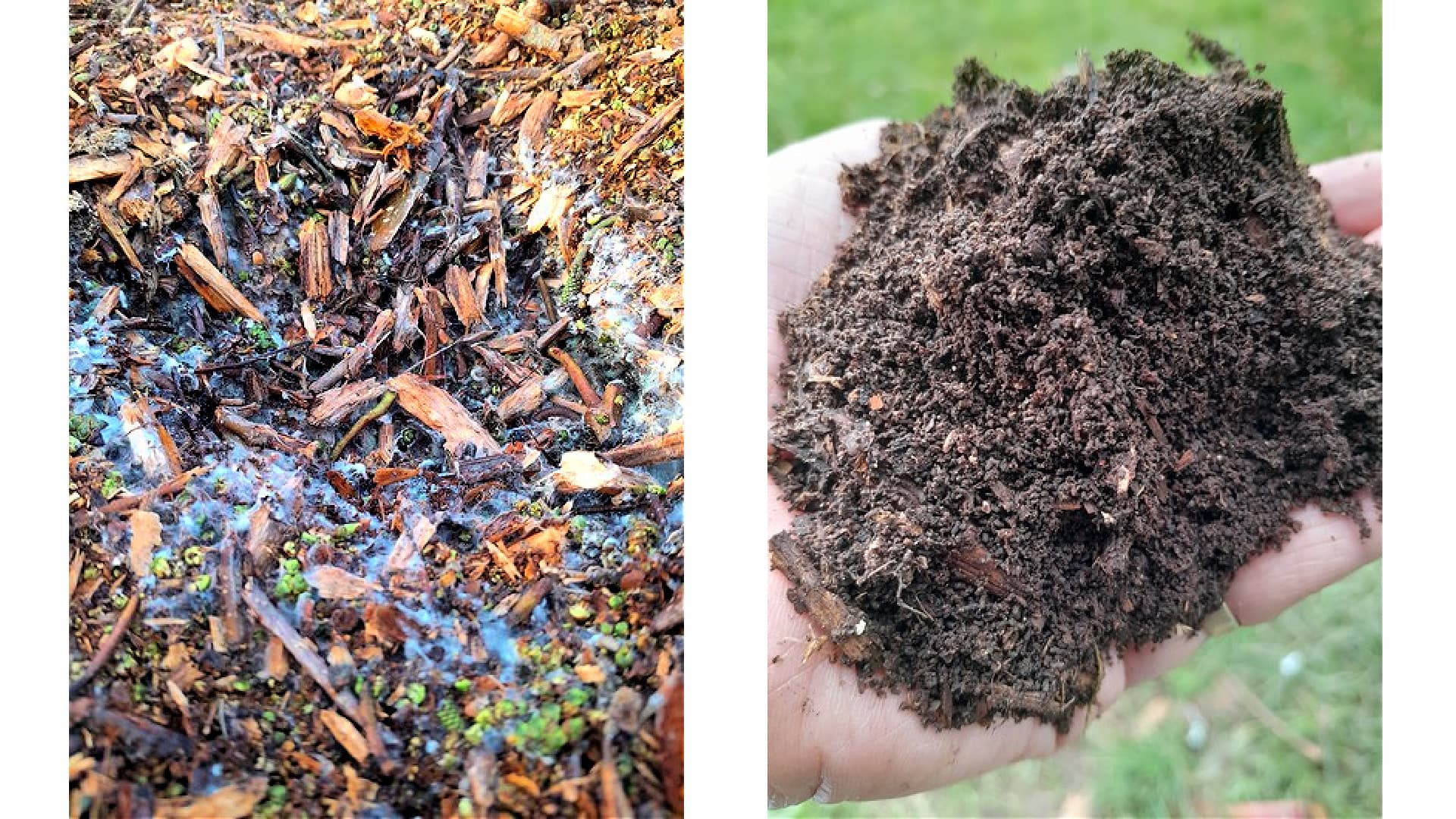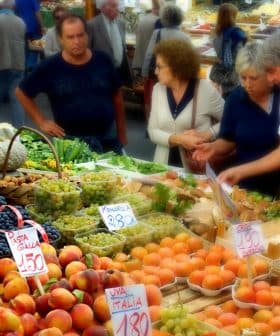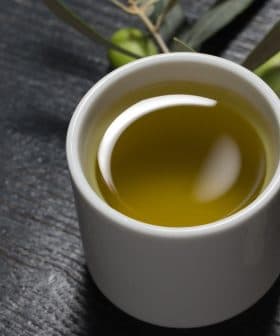Using Effective Microbes to Boost Organic Olive Yields in New Zealand

Ross Vintiner of The Vintiner’s Grove in New Zealand has seen success in improving soil health and increasing olive oil yields by using effective microbial mixes in his olive grove, resulting in reduced costs and improved production. Vintiner’s sustainable farming methods, including the use of mycorrhizal fungi and other microbial mixes, have led to increased soil health metrics, improved drainage, and stable soil test results, while also reducing environmental impact and nutrient loss.
Long considered the domain of pseudoscience, one award-winning olive oil producer in New Zealand is betting on increasing the effective microbes in his soil.
Ross Vintiner, the co-owner of The Vintiner’s Grove, told Olive Oil Times that since he started using effective microbial mixes in his olive grove, he has cut down costs on fertilizers, improved soil health and experienced higher olive oil yields.
Microbes and their environment are on life support. They are little understood by many farmers… (but) microbes are the future of farming.
“At Dali Estate (where the Vintiner’s Grove’s olives are grown), we use microbial brews, compost teas, compost extracts – and practice organic and biodynamic farming – to grow diverse living soil and world-class olives,” he said.
“In doing so, we have maintained our production, cut our external nutrient inputs and production costs, thereby improving the triple bottom line for us and the planet,” Vintiner added.
“Effective microbes enhance plant growth and productivity by fixing atmospheric nitrogen and supplementing the plants with the fixed nitrogen as ammonia,” a team of researchers from the Kalinga Institute of Industrial Technology University in India wrote in a 2020 study published in the journal Sustainable Environment Research.
Effective microbes
“Effective microbes” is a term often used to refer to a group of microorganisms that are believed to have beneficial effects on various processes, including agriculture, waste management, and environmental remediation. These microbes are typically composed of different types of beneficial bacteria, yeast, and sometimes fungi. They are thought to be effective because they can positively influence the microbial communities in their environment, leading to improved outcomes in various applications.
“Additionally, the release of trace elements, secreted antioxidants, exopolysaccharides, bioactive compounds (vitamins, hormones and enzymes) by the effective microbes stimulate plant growth and productivity,” they added.
Vintiner said effective microbes also sequester carbon and improve nutrient retention in soils.
See Also:Better Soil Management, Not Intensive Agriculture, Will Save Mediterranean Olive Groves“Effective microorganisms are probiotics, stimulants and enhancers for soil, plant and waste treatments,” he said. “They are one class of microbial mixes and can be used with nutrients to promote soil and plant biology for performance and production.”
Vintiner added that diverse trees and a mixed sward feed grazing animals above the soil help produce “highly desirable fungal and improved soil for our main cash crop, olives.”
“Microbial mixes cost a fraction of external nutrient inputs,” Vintiner said. “For example, we use olive pomace from the press in an anaerobic brew which tests high in nitrogen, potassium and sulfur, three important nutrients for olive production.”
“The mix has medium amounts of beneficial microbes and is applied as a soil drench, boosted with our own fungal compost extract, for around $10 New Zealand (€5.50) per hectare,” he said.
Along with their low cost relative to synthetic fertilizers and pesticides, Vintiner said using effective microbes helps reduce the global phenomenon of soil loss.
According to the United Nations Food and Agriculture Organization (FAO), 75 billion tons of soil are lost from arable farmland yearly, costing an estimated $400 billion (€375 billion) in agricultural production loss.
“Dali Estate had such origins. Its soil life was poor and sick,” Vintiner said. “This is common in many olive groves I consult on. Microbes and their environment are on life support. They are little understood by many farmers.”
“We are destructive to these indispensable, ancient and valuable lifeforms,” he added. “We pollute and destroy microbes with expensive chemicals and soil management, seeing little increased production or financial benefit as a result… Microbes are the future of farming.”
Among the effective microbes adopted by Vintiner in his olive groves is mycorrhizal fungi.

Ramial hot fungal compost after three days (left) and after nine months (right)
According to the Kalinga Institute of Industrial Technology University researchers, the fungi take carbohydrates from plant roots and, in turn, increase the surface area for water, nitrogen, phosphorous and inorganic nutrients to be absorbed by the plant.
“For olive growers, planting with mycorrhizal fungi rapidly increases growth without using fertilizers. This can also be done retrospectively with established olive trees,” Vintiner said.
“At a new olive grove, a mycorrhizal fungi sachet was inserted into each planting hole with an olive tree,” he added. “Three years on, soil with virtually no life is now living and growing olive trees double the size of their control contemporaries in other non-inoculated groves. You can also retrospectively inoculate olive trees with mycorrhizal fungi, as I have done, with superior growth achieved in inoculated trees.”
Vintiner credited the use of effective microbial mixes for improving Dali Estate’s oil yield, which he said is above average according to Olives New Zealand data.
“This has been achieved with reduced external inputs,” he said. “For example, nitrogen, the growth nutrient, is applied as fish hydrolysate (ground-up fish transformed into a liquid phase) to feed the microbes. We no longer apply phosphorus or potassium.”
“At scale, compost is not an option, so we rely on foliar and ground microbial mixes, along with deficit organic inputs, to maintain production and yield and increase plant resilience,” Vintiner added. “This is important as oil yield is a multidimensional outcome, weather being a major ingredient.”
Away from the oil yield, Vintiner listed various soil health metrics that have improved since he began regularly applying effective microbial mixes.
“Since using microbial mixes, sward diversity has increased, and with it, rhizosheath, the soil-crumb-encasing roots [that facilitate the uptake of nutrients], has improved dramatically,” he said.
Dali Estate has found their worm count has increased from five to 25 worms per spade in that period. Their organic matter and total soil carbon have doubled in the past five years, and annual soil tests confirm nutrient loss is minimal.
“Regular plant tissue tests, Brix monitoring and disease pressure also show positive outcomes,” Vintiner said. “On the critical measure of soil microbial biomass, Dali Estate has gone from being bacteria dominant three years ago to three-to-one fungal dominant. Trees thrive in soils teeming with fungi.”
“All these indicators, including improved drainage and stable soil test results, indicate benefits of regularly and strategically applying microbial mixes,” he added. “Furthermore, it reduces the impact of droughts, the environment and climate change.”
While an emerging number of companies focused on effective microbial mixes are springing up in New Zealand and elsewhere, Vintiner has his own recipe.
He said this mixture can be used immediately or stirred and bubbled for 24 hours. After that, it can either be used or stored for up to four days with the drum covered loosely.
“This is an inexpensive microbial mix and seed inoculant made from fungal compost, applied as a ground drench six times during the growing season,” Vintiner said. “It has a high microbial biomass. The mix is best used within 24 hours but will last up to four days.”
He added that it can be applied with nutrients, biodynamic preparations or a carbon source such as humic acid. Alternatively, it can be used on its own, diluted in water.
For 100 liters of the microbial mix, place three kilograms of fungal-dominant compost in each of two thoroughly cleaned 20-liter-size buckets and fill both with one-third water.
Stir vigorously with a paint mixer for around 60 seconds, then sieve into 80 liters of warm rainwater – the warmer, the better – in a thoroughly cleaned 100-liter-size drum. Using a hose, spray the remainder of the compost in the sieve, extract microbes and nearly fill the 100-liter tank. Add one liter of kelp and another liter of fish hydrolysate to the drum.
Vintiner makes compost from ramial branches, the side-fruiting branches, from Dali’s Italian alder trees, which are chipped and hot composted in autumn for up to 12 months.
“The result is a crumbly, soil-like fungal compost with very high microbial biomass,” he said. “This compost is a central ingredient in all our microbial mixes.”
Additional ingredients that can be added are Azospirillum (nitrogen-fixing rhizobacteria for the root zone), two tablespoons of biochar dust or two tablespoons of basalt dust. Next, the microbial biomass is tested.
When applied, half-filling a clean spray tank, circulate the mixture, adding nutrients and humic acid if desired. The microbial mix is then added to the spray tank.
Vintiner prepares at least 25 liters of the mixture (applied with water) per hectare. He recommended spray pressure of no higher than 60 pounds per square inch to protect the microbes before or after rain in the morning or evening.
“Using reduced organic nutrient inputs, always with microbe applications, means little to no nutrient loss and run-off to our wetland or the environment,” Vintiner said. “Microbes help retain and supply nutrients.”
“Reduced inputs and a better-functioning, microbial-rich soil reduces pollution and nutrient loss,” he concluded. “Using a range of tools, including biochar and fungal compost, we sequester carbon dioxide into our soil for the benefit of microbes, plants, food, humans, the biosphere and the planet.”










